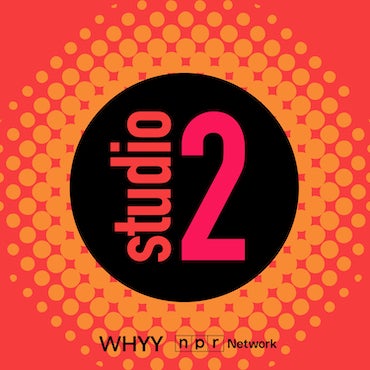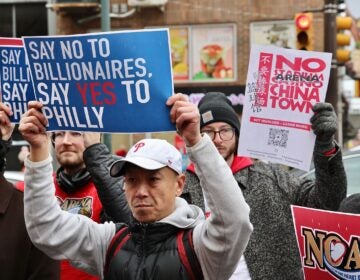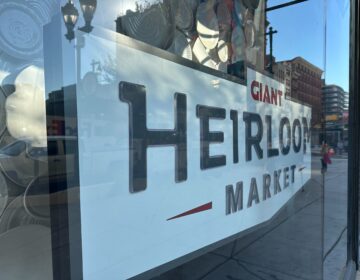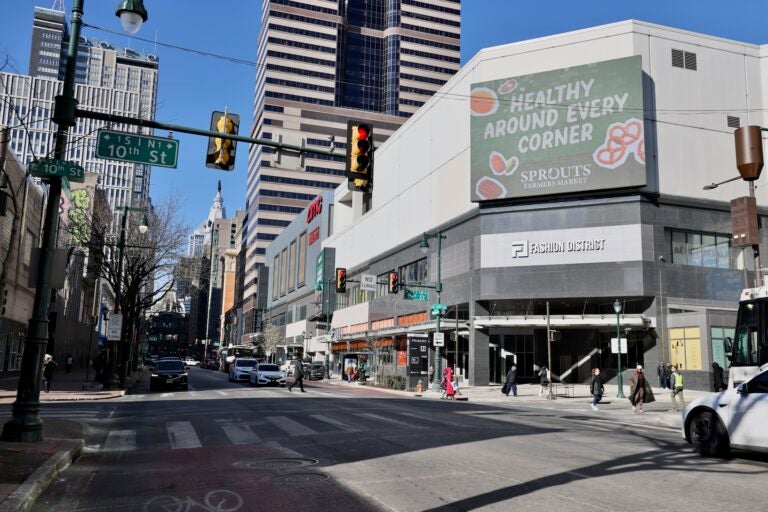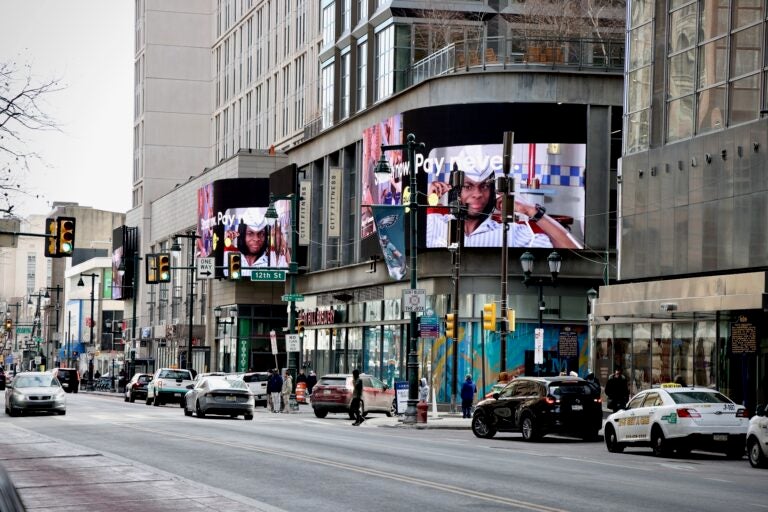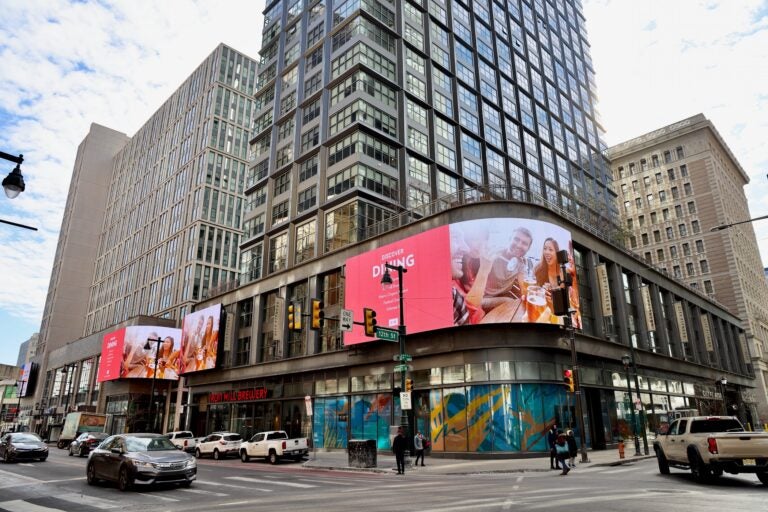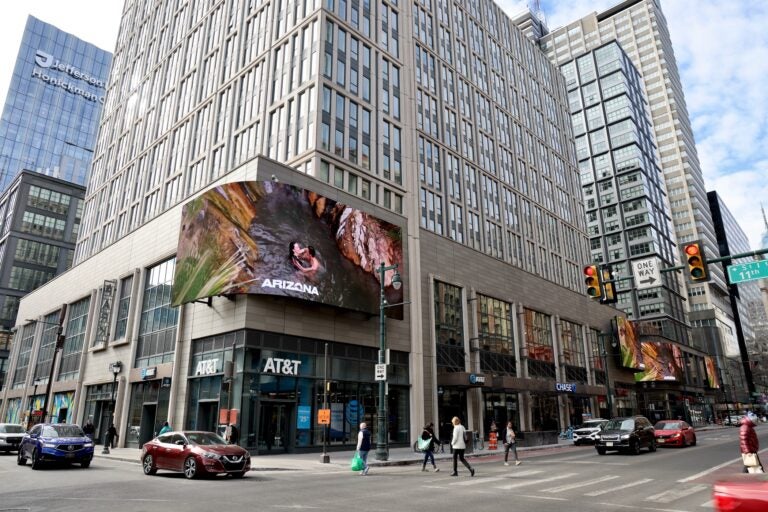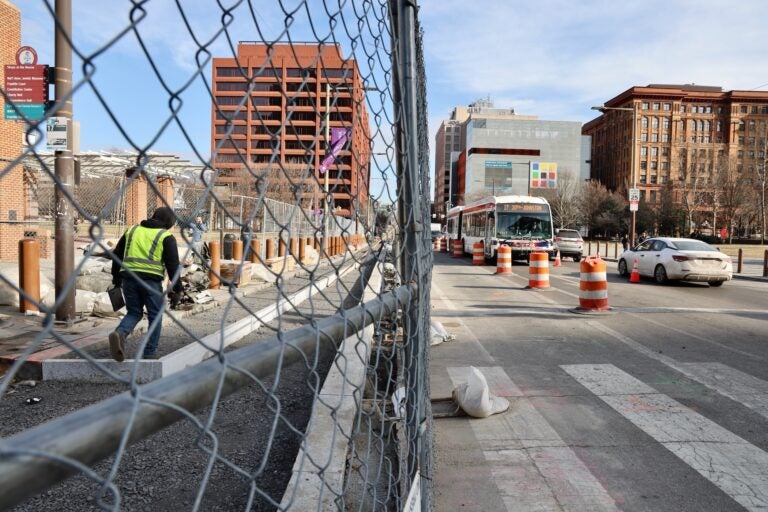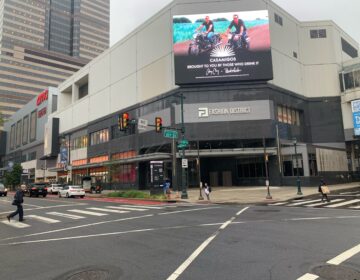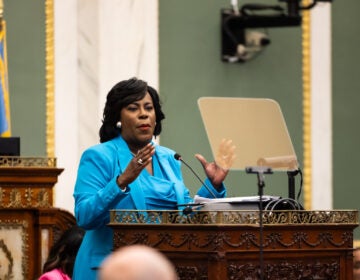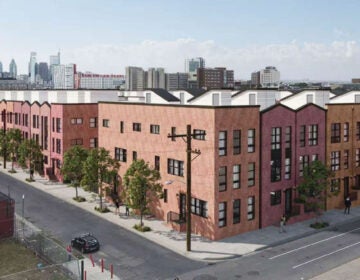After the Sixers arena pivot: Philly’s Market East corridor remains a top priority and a sizable challenge
The Philadelphia 76ers are no longer building an arena in Center City. But reviving the area is still on the table.
What you need to know
- The 76ers reversed course on plans to build a $1.3 billion arena near Chinatown, instead choosing to remain in South Philly
- The development comes more than two years after the team first proposed the Center City arena and after Philly City Council approved the project in December
- Arena opponents expressed “initial skepticism, dazed elation, then cautious optimism” at the news
In the middle of last month, the Mayor’s Reception Room teemed with reporters, government officials and union leaders.
A day earlier, news had broken that the Philadelphia 76ers had struck a deal with Comcast Spectacor to build a new arena at the sports complex instead of Center City. Now, team officials were ready to confirm what everyone already knew.
The marathon news conference provided few details about the forthcoming development in South Philadelphia or why the Sixers changed course. But despite the stunning reversal, the joint commitment to revitalize Market East — the languishing commercial corridor that sat at the heart of the team’s first proposal — would stay the same.
“Both our organizations love this city and together we can do incredible things,” said Josh Harris, co-founder of Harris Blitzer Sports and Entertainment, which owns the Sixers.
Real estate developers and industry experts say they’re encouraged by that promise, but they have mixed feelings about Market East’s future now that a new basketball arena isn’t part of the game plan. While some say not having an arena makes it easier to reimagine the corridor, others argue that the task will be much harder to achieve without having the facility as an anchor.
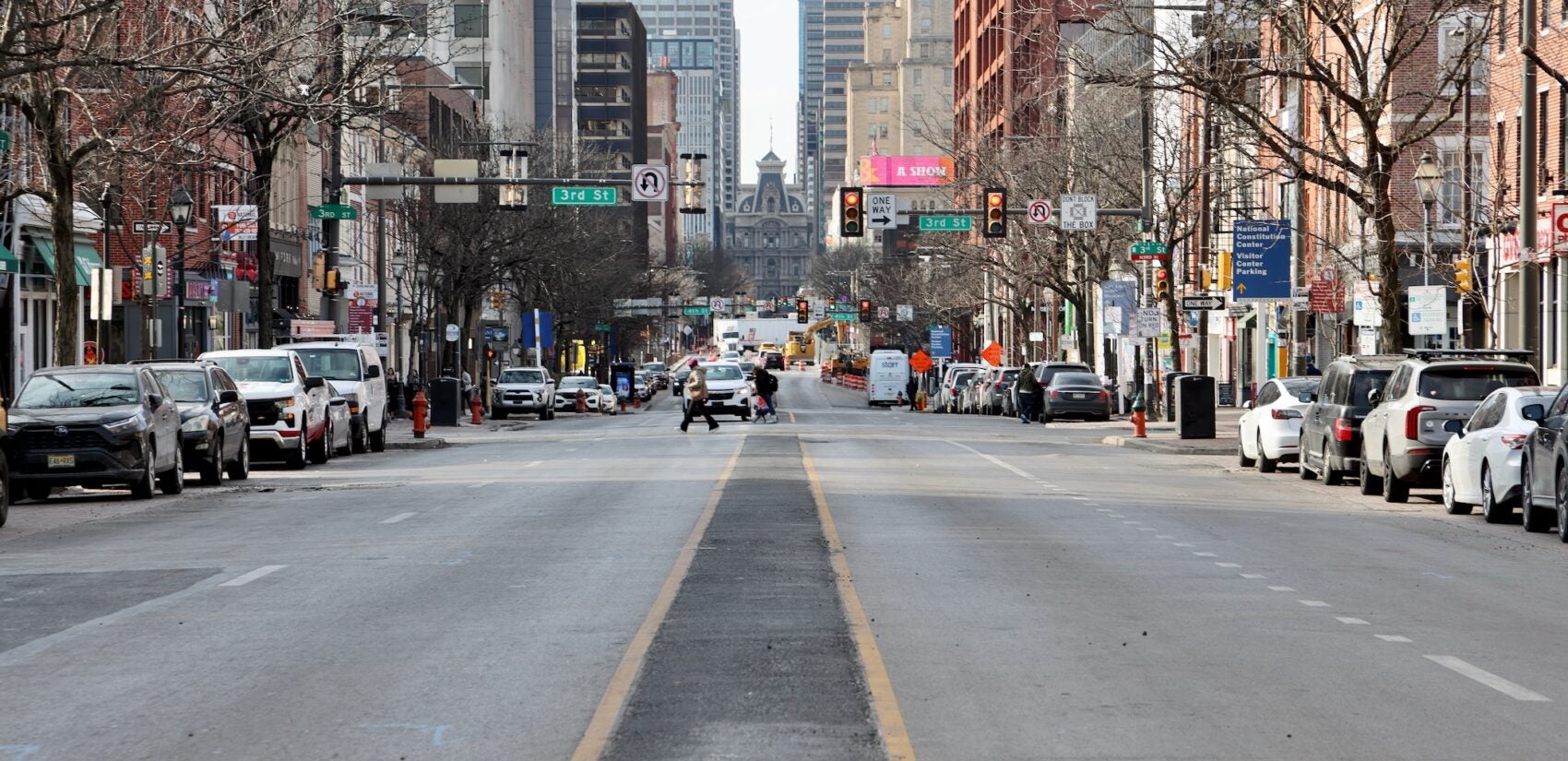
There’s also little consensus on the best path forward, as the city prepares to create a master plan it hopes will deliver a thriving destination — a challenge experts say needs to be met in the right way for the struggling corridor to turn the page.
“Market East was once Philadelphia’s primary shopping district, and its future revitalization will impact the entire region and Philadelphia’s image across the country and across the world,” said Lauren Gilchrist, executive vice president and market leader for the real estate company Newmark Greater Philadelphia.
Setback or square one?
Market East was once home to the “Big Six,” a group of flagship department stores on Market Street that brought considerable foot traffic to the blocks east of City Hall, including Strawbridge & Clothier, Gimbel Brothers and Wanamaker’s.
But by the 1950s, as the city’s factories moved to the suburbs or overseas, families started moving out of Philadelphia and the prominence of these premier stores began to fade. Eventually, all of them changed ownership or closed.
Market East has never been quite the same, despite sizable investments in the corridor. Economic shifts driven by the COVID-19 pandemic didn’t help, and the corridor continues to experience high vacancy rates.
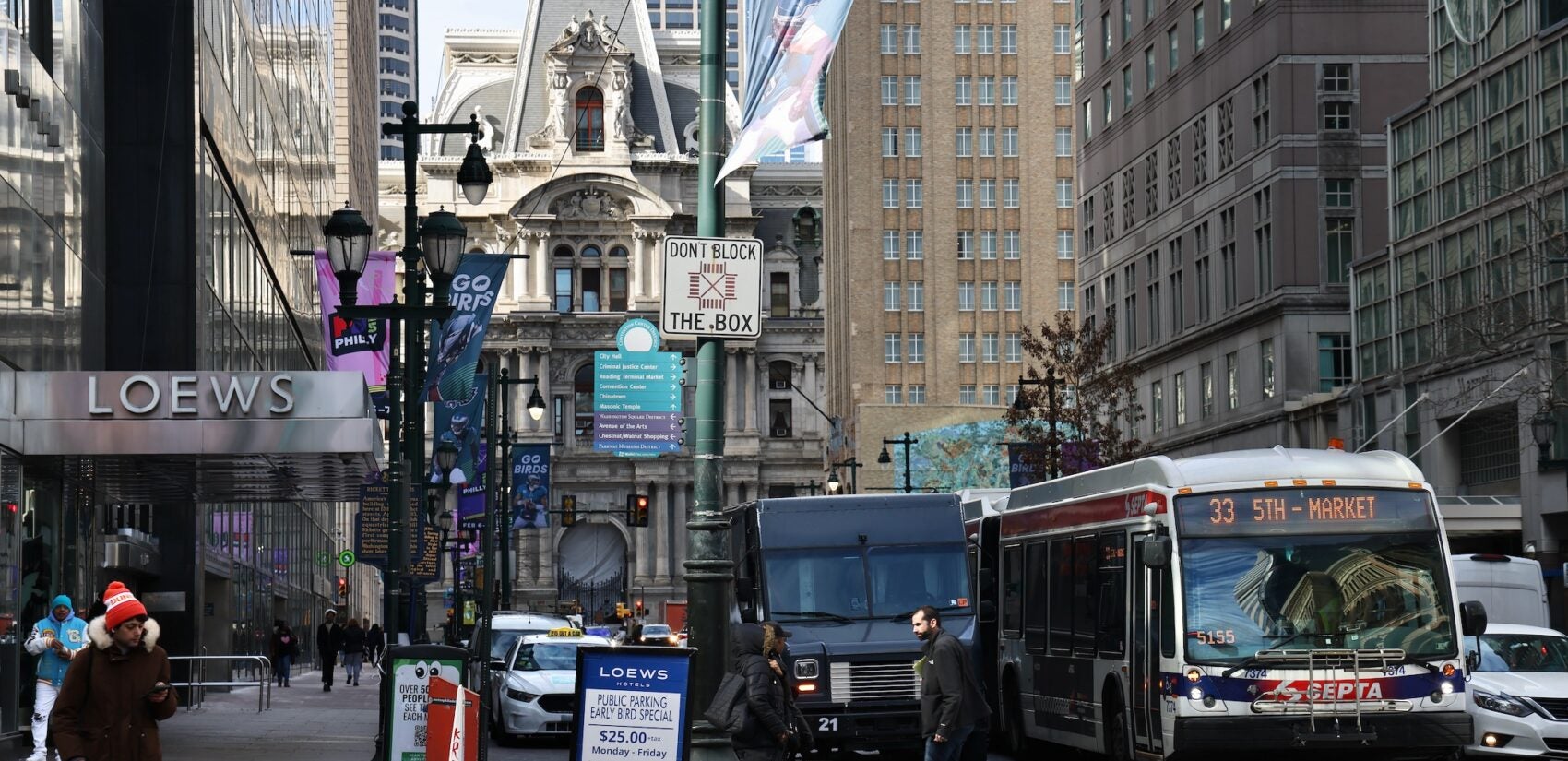
In the arena, backers saw a game-changer — an opportunity to write a new chapter for Market East. The facility, they argued, would be an economic engine that would give other developers the confidence to invest in the area.
Now that the project is off the table, some developers are struggling to envision how Market East can be revived in the near future.
For Mohamed “Mo” Rushdy, president of the Building Industry Association of Philadelphia, it will be difficult to replace the lost foot traffic and indirect revenue generated by a $1.3 billion arena. The 18,500-seat facility was expected to be open 150 nights a year between games, concerts and other events.
“Developers look to develop in areas where there is life and a commercial corridor that is viable. Currently, Market East is not a viable corridor. It needed that boost,” said Rushdy, managing partner of The Riverwards Group.
“We are definitely back to square one,” added Rushdy, who also pointed to the impending closure of Macy’s at 13th and Market streets.
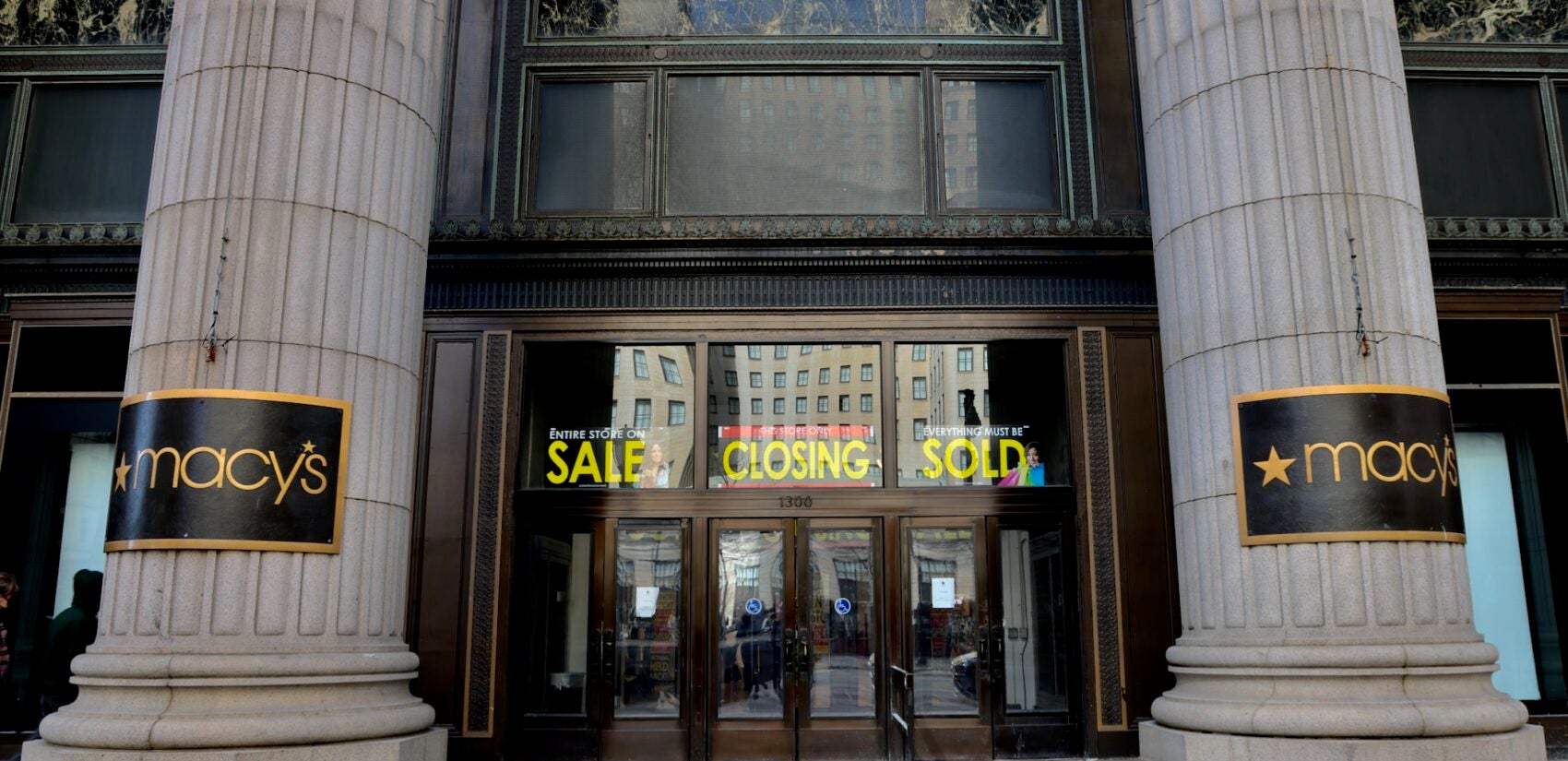
Others are more bullish on the corridor’s future. While they acknowledge the arena’s cancellation is a setback, they don’t view the Sixers’ decision as anything approaching a fatal blow — quite the opposite.
Without the arena, Gilchrist said the city has a clean slate to create a master plan that offers developers a clear road map — which can not only show where certain projects should go, but also instill confidence because the plan will demonstrate a consensus between the public policy community, elected officials and residents.
“This just changes some of the tone of the conversation with investors, but it doesn’t necessarily make it any worse,” she said.
Harris Steinberg, executive director of Drexel University’s Lindy Institute for Urban Innovation, agreed.
“There have been many false starts for East Market Street — all of them kind of billed as the golden goose that’s gonna revitalize the corridor,” Steinberg said. “We know from experience that one building, particularly one that’s not external-facing, is not gonna do it.”
Reimagining a modern corridor
And yet it’s unclear what mix of uses would be best, in part because Americans are spending more time at home and shopping more online.
Steinberg says any new buildings will need to be flexible enough to house different tenants over the years, including different types of retail.
The corridor will also need a fair number of mixed-use developments with housing to be successful, said Job Itzkowitz, executive director of the Old City District.
“At the end of the day, what makes any commercial corridor tick is people,” Itzkowitz said. “If there’s not an opportunity for office workers, which there isn’t, and there’s not going to be a ‘deus ex-machina’ event like the creation of an arena, then there needs to be housing. We have to make it as easy as possible to build as much housing as possible.”
He also argued that the city should eliminate mandatory on-site parking requirements for new buildings in the area to reduce construction costs and spur development.
An independent plan released last year by the Center City District identified a number of development opportunities on East Market Street, between City Hall and 6th Street, particularly along several underutilized blocks on the south side of the corridor, where the vacancy rate sits at 50% in some places.
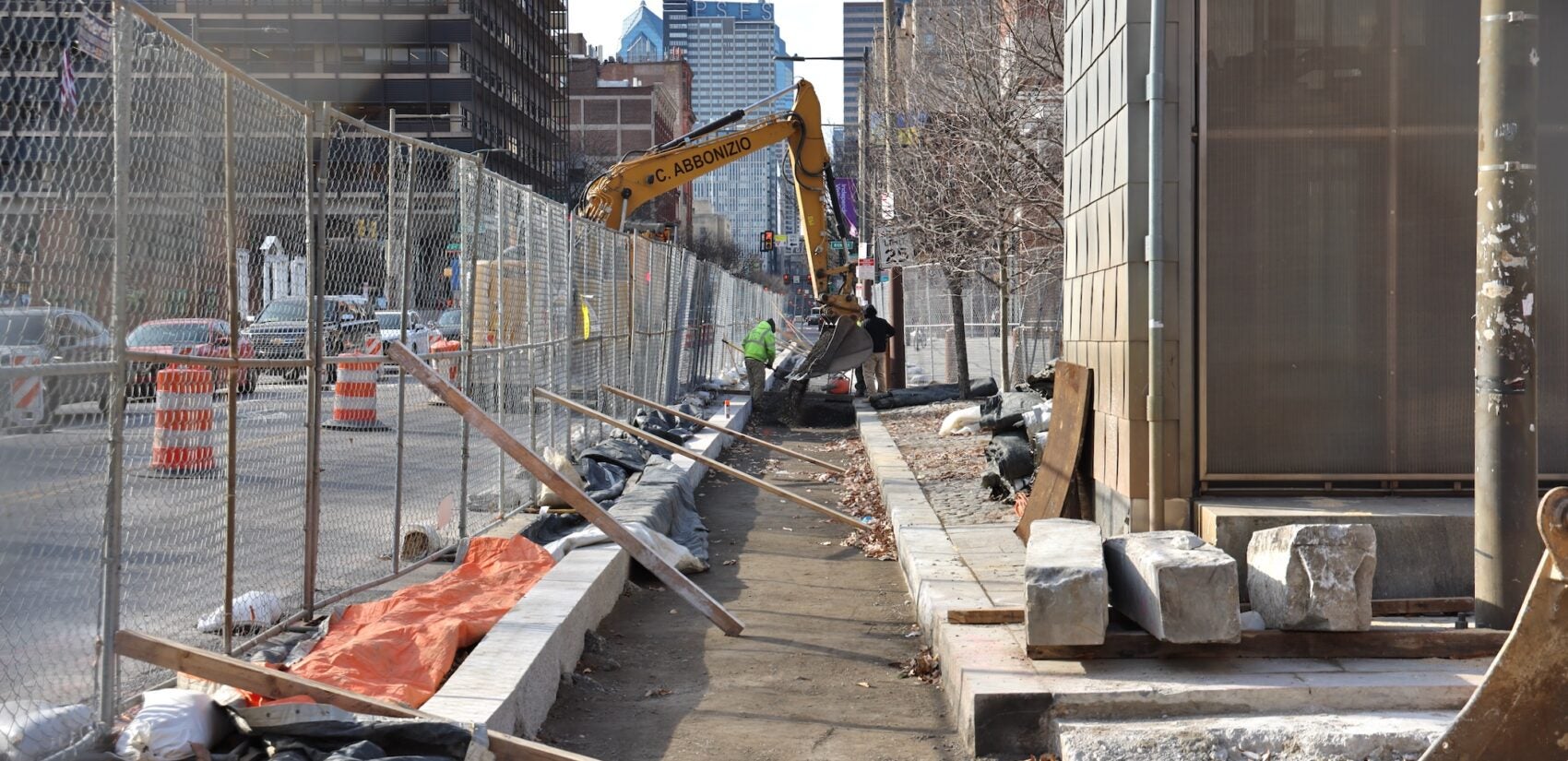
The list includes the infamous “Disney Hole” at 8th and Market streets, named for the ill-fated arcade attraction the entertainment giant proposed but ultimately walked away from in the late 1990s. For years, the block-long site, currently owned by the Goldenberg Group, has been a surface parking lot operated by the Philadelphia Parking Authority.
The city’s presentation on the 76ers’ arena plan for Center City said Goldenberg was most recently considering building a 400- to 600-bed hotel with retail. The company did not respond to a request for a comment on the status of that proposal.
The CCD report also highlighted another undeveloped surface lot at 1301 Market St., which sits across the street from the famed Wanamaker Building. The parcel is owned by the estate of the late real estate speculator Sam Rappaport, who died in 1994.
In 2016, Conshohocken-based Oliver Tyrone Pulver Corporation proposed erecting a 30-story, glass-walled office tower on the lot. The company later abandoned that plan after failing to attract enough investors or potential tenants.
Mitchell Marcus, senior managing director at real estate company JLL, said redeveloping Market East will likely require the demolition of some smaller commercial buildings on Market Street in and around the “Disney Hole.”
“The existing structures currently in place aren’t going to lend themselves to renovation. I think you’re looking at a significant amount of demolition and rebuild that’s gonna have to take place,” Marcus said.
The Fashion District mall, a $420 million investment that has floundered since opening in September 2019, may also need to be torn down, said Steinberg, who called the project perhaps the corridor’s biggest redevelopment challenge going forward.
The Sixers arena was poised to take over one-third of the mall before the team decided to stay in South Philadelphia. Its owner, the giant, California-based mall operator Macerich, has been selling off its less-profitable properties.
Macerich did not respond to multiple requests for comment.
An expensive effort
For more than two years, Sixers executives boasted that the team’s arena proposal for Center City would be realized without taxpayer dollars.
But real estate experts say reimagining Market East would likely require some kind of public-private partnership to be completed, especially given an ongoing spike in the cost of building materials and high interest rates for construction loans.
Demolishing a structure, for example, can add millions to a project’s budget.
“There’s a lot of red tape. There’s a lot of people pushing back on anything you try to build,” said Elizabeth Pulver Castleman, Pulver’s marketing chief. “If we can all work together toward a common purpose of some redevelopment of that corridor, that would be really valuable.”
Redeveloping Market East, she said, would probably take a massive state or even federal investment, along the lines of the urban renewal programs of the 1960s and ‘70s, to get the ball rolling and give private investors confidence to dive in.
That could involve combining state programs like Keystone Opportunity Zones, the Redevelopment Assistance Capital Program, and the Business in Our Sites program, Castleman said.
There’s also a possible precedent for using state subsidies to revitalize a commercial corridor. In October, Shapiro announced that the state would contribute $62 million toward a $600 million, 10-year plan to reimagine downtown Pittsburgh.
For now, Mayor Cherelle Parker’s administration is focused on creating a new master plan for Market East. The process could take years to complete, whether the city puts out a request for proposals or Parker issues an executive order to kick-start the work.
The administration declined an interview request.
City Councilmember Mark Squilla, whose district includes Market East, is hopeful that the master plan process will start sooner than later. And if he had his way, there would be a plan in place by the end of the year.
To him, the Sixers’ decision creates an opportunity to have a “win-win” for the city — a new arena in South Philadelphia and an improved commercial corridor in Market East. And he said it’s “absolutely priceless” that the project will be able to leverage the resources of Comcast and Harris Blitzer, though it’s unclear what their roles will be.
“I’m excited,” said Squilla. “If you look at it holistically, it really does create a better opportunity.”

Subscribe to PlanPhilly
WHYY is your source for fact-based, in-depth journalism and information. As a nonprofit organization, we rely on financial support from readers like you. Please give today.

